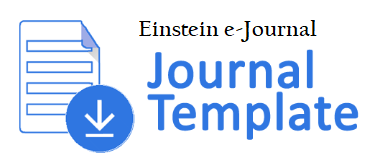BIOMECHANICS OF ANGIOGENESIS: A LITERATURE REVIEW ON THE INFLUENCE OF HYDRODYNAMIC FORCES IN NEW BLOOD VESSEL FORMATION
DOI:
https://doi.org/10.24114/eins.v13i3.69053Abstract
Angiogenesis, the formation of new blood vessels from pre-existing vasculature, is a complex and tightly regulated biological process essential for tissue growth, regeneration, and repair. While traditionally studied through the lens of biochemical signaling, recent research has emphasized the pivotal role of biomechanical stimuli particularly hydrodynamic forces in orchestrating angiogenic processes. This literature review critically examines twelve peer-reviewed studies selected through a systematic PRISMA based approach, focusing on the influence of mechanical forces such as shear stress, cyclic strain, interstitial flow, and extracellular matrix compression on endothelial cell behavior and vascular morphogenesis. The evidence indicates that mechanical stimuli not only shape the structural development of vasculature but also modulate cellular functions through specific signaling pathways, including VEGFR-2, integrins, Notch, and cytoskeletal regulators. Furthermore, hydrodynamic forces affect spatial patterning of vessel formation, endothelial cell polarity, and permeability, playing dual roles in physiological angiogenesis and pathological conditions such as cancer, arteriovenous malformations, and ocular neovascular diseases. Despite these advancements, several research gaps persist, including the lack of physiologically relevant experimental models, inconsistent methodologies for applying mechanical forces, and limited understanding of endothelial cell heterogeneity in response to flow. Moreover, the translation of mechanobiological insights into effective clinical therapies remains underdeveloped. Future research must integrate multi-scale models, patient-derived systems, and standardized biomechanical protocols to deepen our understanding of angiogenesis under hydrodynamic regulation and unlock novel therapeutic strategies.Downloads
Published
How to Cite
Issue
Section
License
Copyright (c) 2025 Eviyona Laurenta Barus, Silvia Dona Sari, Yanthy Leonita Perdana Simanjuntak, Budiman Nasution

This work is licensed under a Creative Commons Attribution-NonCommercial 4.0 International License.
Authors who publish with this journal agree to the following terms:
- Authors retain copyright and grant the journal right of first publication with the work simultaneously licensed under a Creative Commons Attribution-Non Commercial 4.0 License (CC BY-NC) that allows others to share the work with an acknowledgement of the work's authorship and initial publication in this journal for non commercial purposes.
- Authors are able to enter into separate, additional contractual arrangements for the non-exclusive distribution of the journal's published version of the work (e.g., post it to an institutional repository or publish it in a book), with an acknowledgement of its initial publication in this journal.



